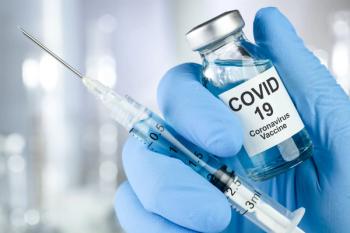
Omnipod Feasibility Study Seeks to Perfect Formulas That Will Make Artificial Pancreas Run
Current work seeks to perfect the algorithm that would someday let the insulin pump automatically make the multitude of delivery decisions that would have been made by a healthy pancreas. Advances are happening alongside a shifting landscape in payer coverage, with advocates worried that they might lack choice amid so much innovation.
For years, researchers around the globe have raced toward the holy grail in type 1 diabetes (T1D) care: the artificial pancreas, a device that delivers the right insulin dose without patient interaction, without extreme highs or lows in blood glucose, and with limited fear of overnight episodes of hypoglycemia that keep loved ones sleeping with one eye open.
Last month’s FDA approval of Medtronic’s MIniMed 670G was the first acknowledged by JDRF as worthy of the “
In mid-September, Insulet Corporation announced that the first patient had completed a
Not everyone with diabetes uses a CGM, but those that do have ongoing information about where their blood glucose levels have been and where they are headed, which allows more precise insulin dosing and can let patients (or parents) take action before a hypoglycemic episode ends with a trip to the emergency department.
So, just what is an artificial pancreas? As researchers explain during
According to Shacey Petrovic, president of Insulet Diabetes Products, the current feasibility study is about perfecting the algorithm—exploring its limits under a variety of conditions. The Omnipod Horizon system will be a hybrid closed loop system, Petrovic said, which means patients will still interact with it at mealtime to “announce” how many carbohydrates are being consumed. After 20 adults complete the feasibility study, she said, “we will test larger patient populations based on different scenarios.”
The next step would be a pivotal trial. Based on how quickly the FDA acted on the MiniMed 670G, Petrovic said, she hopes that the Omnipod Horizon system could reach the market by 2019.
The device’s niche among competitors for a share of the artificial pancreas market is its tubeless design—the waterproof “pod” affixes to an arm or other part of the body with 3 days’ worth of insulin, making it ideal for people who are active, including children.
“The pod is doing amazing things for kids and for their families,” Petrovic said. Kids can wrestle, swim, and play without worrying about tubes being tangled, and parents are not faced with multiple daily insulin injections on their young children, she said.
Omnipod’s users tend to be younger: according to data from Insulet, the average age of current active patients is 36, and 29% of the direct active patients are age 20 or younger. Separate data from the Diabetes Connections USA Patient Panel Report show the Omnipod is preferred by 31% of the pediatric segment, defined as age 18 or younger.
But besides the design, there’s another reason why Omnipod users skew young: So far, Petrovic said, Medicare will not pay for the device. This occurs even though recent evidence shows that beyond T1D patients, those with
Payers’ willingness to fund diabetes technology—and give patients choices—has been top of mind in the advocacy community. In July, an
Petrovic said that Insulet is watching all these developments. “There is great concern about this," she said. It’s one thing for a payer to have a preferred drug, but “people don’t view interacting with a device the same way.”
Fortunately, she said, early talks with payers suggest that improving quality of life issues will matter, along with improved glycemic control, when it’s time to make coverage decisions on artificial pancreas technology. “We don’t want to stifle innovation that has finally started to accelerate,” she said.
Newsletter
Stay ahead of policy, cost, and value—subscribe to AJMC for expert insights at the intersection of clinical care and health economics.









































